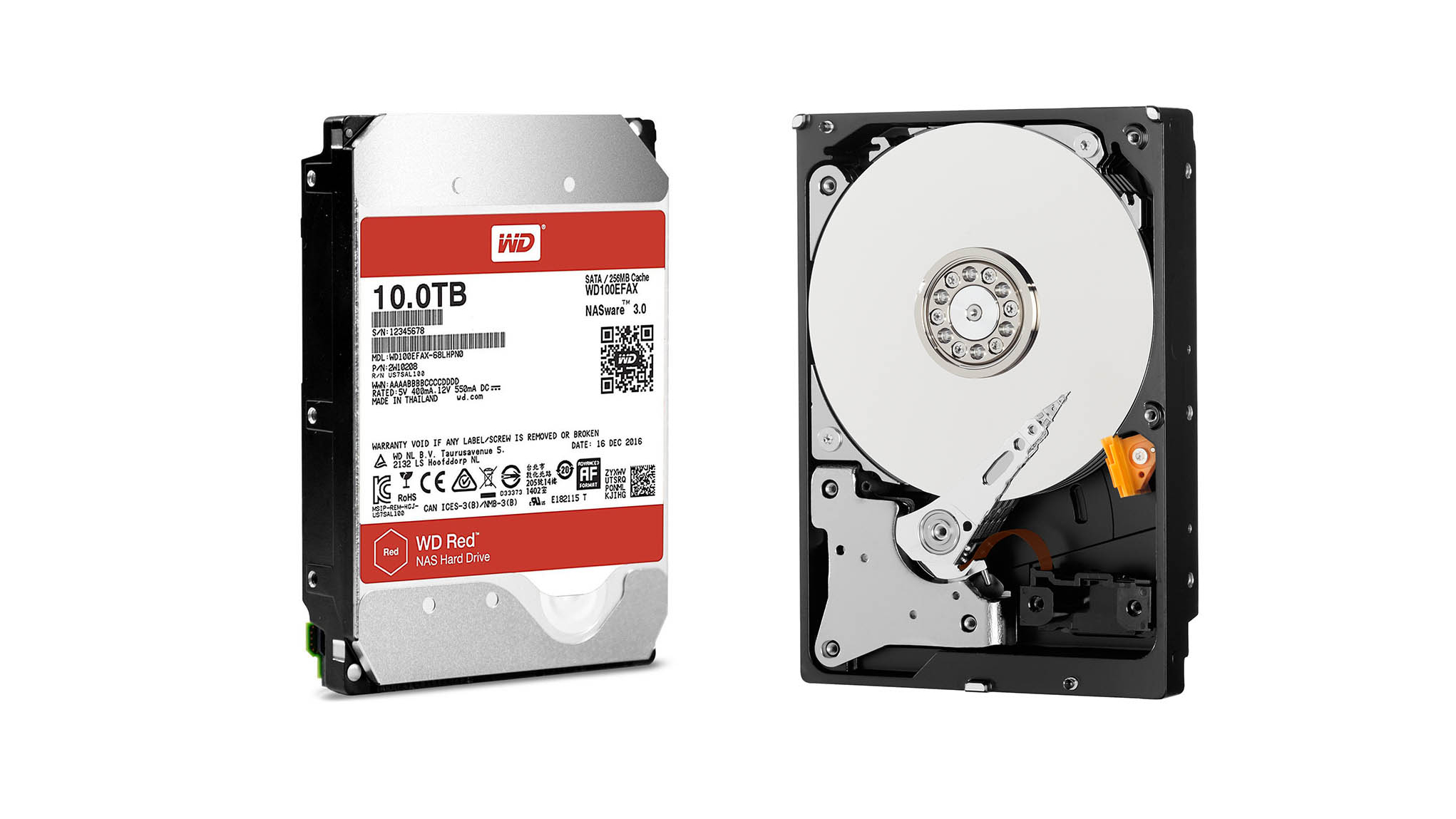TechRadar Verdict
Other than its size, there’s not much about the WD Red 10TB which is all that spectacular. However, IT admins need reliability above all else given the scale of the array that these units can easily build. And, with a million hours between potential failures, this drive could provide that security.
Pros
- +
Huge capacity
- +
Low power consumption
- +
Quiet
Cons
- -
Not the fastest 10TB drive
Why you can trust TechRadar
These units are built for the long haul rather the short spring of desktop mechanisms, and now offer massive capacities for IT managers to create arrays big enough for the majority of business needs.
Western Digital was the first drive maker to formally address the popularity of personal NAS storage devices with its Red drive series.
Design
WD Red products range from the now diminutive 750GB WD7500BFCX design up to the monstrous 10TB WD100EFAX reviewed here.
These are all standard 3.5-inch SATA drives and only vary substantially in the numbers of heads and platters, memory cache and overall capacity.
Digging into the details, the big difference between the 10TB WD100EFAX and the models beneath it is the capacity (9313.87GB unallocated), cache size and overall throughput.

As with all the WD Red drive designs, this offering balances performance, operating life, power consumption and error management.
Except with 10TB of space to fret over, those behind the WD100EFAX needed to make sure that these units didn’t have an unexpectedly high failure rate or any other problematic performance issues.
Sign up to the TechRadar Pro newsletter to get all the top news, opinion, features and guidance your business needs to succeed!
To meet these challenging objectives, Western Digital encased all seven 1.42TB platters within a helium-filled enclosure using technology acquired when it bought HGST.
Helium atoms, as we all know, are smaller than those of their oxygen and nitrogen counterparts found in air, reducing the drag on moving parts. Or that’s the theory.
However, the impact of that might be marginal, as the WD100EFAX only rotates at 5400RPM. The Red Pro variation, the WD101KFBX, spins at 7200RPM, like the rival Seagate IronWolf 10TB.
Often the biggest capacity drive isn’t the quickest, as the cache included has the most number of platters to cover. But that isn’t the case with the WD100EFAX, as it is the fastest Red series mechanism at 210MB/s.
And, amazingly, it also uses less power than the 8TB Red – just 5.7W compared to 6.4W. That might seem like a minor difference, but should you have hundreds of these running 24/7, a design that consumes 11% less power could have serious cost implications over time.
These drives will need to spin for longer to move the same amount of data as a quicker drive, in theory. But that thinking assumes drives run at full speed all the time, and that’s not often true in real-world use.
Also, if the drives are in an eSATA box, for example, that box will only be quicker with the WD100EFAX if there are three drives or less in it. That’s because the practical limit of a single SATA 3 channel is about 550MB/s, and once you’ve hit that ceiling, the speed of each drive becomes largely irrelevant.
If you want the best performance on a RAID configuration, there are solid-state PCIe options that will exceed any conventional spinning disk technology, and drive connection technologies that are better than SATA.
But there is another dimension to this drive that pertains to the volume that Western Digital sells, and the potential to ship even more units.

Pricing
At the time of writing, this drive can be bought for £292 in the UK and $324 in the US if sourced from Amazon. That equates to about 34GB per UK pound and 31GB per US dollar, about 10% cheaper than the Seagate IronWolf 10TB and almost the same price as the WD Gold 10TB.
There is, relatively speaking, a small amount of difference (1GB per dollar/pound) between this 10TB drive and its smaller WD80EFZX brother.
It undercuts the IronWolf Pro 10TB and WD Red Pro 10TB by around 20-25%. We’d mention other brands, but at this time only Western Digital and Seagate make drives of this capacity. And Seagate also offers a 12TB model for those with a serious capacity addiction.
Models that are at the very top of the food chain tend to carry a price premium for being the best, or in this case the biggest.
If you want a massive array built with the minimum number of drives the choice is Western Digital or Seagate, and at this time the 10TB Red is the most affordable option.
Mark is an expert on 3D printers, drones and phones. He also covers storage, including SSDs, NAS drives and portable hard drives. He started writing in 1986 and has contributed to MicroMart, PC Format, 3D World, among others.

